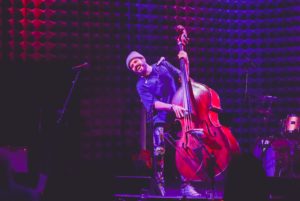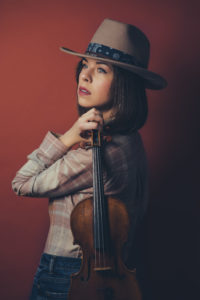SummerFest 2020 Signs Off with Exuberant Schubert ‘Trout’ Piano Quintet
SummerFest 2020 signed off Saturday, August 29, with an exuberant slalom through Schubert’s “Trout” Piano Quintet, D. 667. In his introduction to the performance, Music Director Inon Barnatan explained that it was the quintet’s “carefree, joyful” character that made it the right choice. Considering the perilous state of the nation’s health and the current acrimonious political climate, such a decision is either a sign of hope or of desperate distraction.
Like this festival’s other ensemble performances, the five players forged their ample individual musical prowess in amicable mutual consort. The quintet gets its name from the well-known Schubert art song “Die Forelle” (or “The Trout”), and pianist Barnatan supplied as much lyrical finesse as his instrument would allow. Schubert—whose piano sonatas rival those of Beethoven in presenting taxing demands on players—gave Barnatan ample opportunity to flaunt his brilliant dexterity in idiomatic thematic elaborations.

Michael Thurber [photo (c.) Lauren Desberg]
Violinist Tessa Lark excelled in her elegantly tapered thematic volleys with the piano in the Andante, which also featured swooning exchanges between Weilerstein and violist Yura Lee, whose colorful sonority and supple phrasing also increased the quintet’s allure. New to the SummerFest 2020 roster, contrabass master Michael Thurber sustained the ensemble with a dynamic range that started at dulcet rumble and crested at majestic roar.
Perhaps to atone for this festival’s concentration on 19th-century music, Barnatan opened this final program with a set of J.S. Bach Two-Part Inventions arranged for violin and contrabass and Sergei Prokofiev’s decidedly neoclassical Sonata in C Major for Two Violins from 1932.
Lark and Thurber gave a nimble, stylishly nuanced account to seven of the Bach Two-Part Inventions, which were originally written for harpsichord or clavichord. With the violin

Tessa Lark [photo (c.) Lauren Desberg]
In four compact movements, Prokofiev’s Sonata for Two Violins covers a surprisingly wide range of musical ideas and textures with just two instruments of identical range, a tribute to the composer’s inventive imagination. From the agitated and breathlessly close imitative portions of the Allegro to the long, undulating themes of the Comodo, quasi allegretto, Tessa Lark and Yura Lee made a substantial case for hearing this fine work more frequently in concert and recital.

Ken Herman, a classically trained pianist and organist, has covered music for the San Diego Union, the Los Angeles Times’ San Diego Edition, and for sandiego.com. He has won numerous awards, including first place for Live Performance and Opera Reviews in the 2017, the 2018, and the 2019 Excellence in Journalism Awards competition held by the San Diego Press Club. A Chicago native, he came to San Diego to pursue a graduate degree and stayed.Read more…

During last night’s performance, I discovered Eric Bromberg’s, as always, wonderful program notes.
Beautifully written!! Next year we will hear the La Jolla SummerFest 2021 in person!!! Thank You!